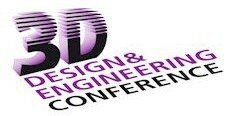Despite all the hype around personal desktop 3D printers, consumers never warmed to the idea of machines only really useful for making toys—most kids already have more than enough plastic figurines lying around for their parents to step on.
Rather than fuelling a movement of makers and tinkerers, the technology will have its biggest impact in enterprise manufacturing. But don’t look for assembly lines to be replaced by building-sized 3D printers that spit out finished products any time soon. Instead, the technology will enable two value-creating steps in the manufacturing process: rapid prototyping and mass-customization.
Hybrid digital-physical stores will win the retail race in 2016
“Over the last couple of years [3D printing has] gone through this massive hype cycle where it’s going to print you a cup and fill it with coffee,” observes Ben Wynne, chief Technology Officer at Vancouver-based Wiivv Wearables. Wynne has been working with the technology for over a decade, including a stint leading a skunkworks engineering team at HP.
Consumer demand for personalized products is growing according to Wiivv, which plans to 3D print its “body-perfect” gear, starting with the Base insoles it’s currently pre-selling via Kickstarter. The company’s “adaptive manufacturing system” turns scans into printable files in short order, enabling it to theoretically produce everything from snugger earbuds to palm-fitting golf club handles. Read more
Source: canadianbusiness.com


